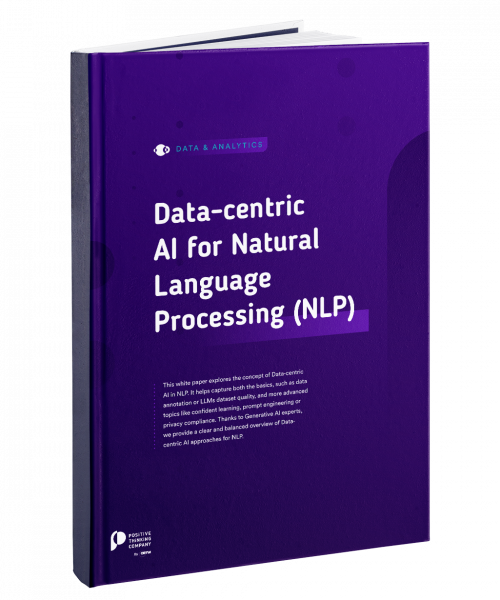In the ever-evolving realm of Data & Analytics, automating the transformation of unstructured data into structured formats is a pivotal challenge. As we continue our LLMs mini-series, our third episode delves deep into the intricacies of converting unstructured textual data into a structured form, leveraging the prowess of Open-Source LLMs.
Building on the momentum of our previous episodes on API Integrations with LLMs and Parallel Multi-Document Question Answering, we now turn our focus to a practical demonstration involving a dataset of hotel requests. The aim? To showcase the seamless process of data transformation using state-of-the-art language models.
Introduction to Structuring Data with Open-Source LLMs
Embarking on the path of converting unstructured data into structured information is akin to charting unknown territories. Here’s the two-step process that our expert is taking:
- Generating a Dataset with the Self-Instruct Method: When data is scarce or lacks accuracy, the Self-Instruct Method harnesses the capabilities of LLMs. This method involves providing seed instructions to the LLM, guiding it to generate new data that adheres to the desired structure or format. It’s a powerful technique for teams seeking to augment their datasets and is particularly valuable when access to high-quality data is limited.
- Fine-Tuning a Large Language Model: Fine-tuning an LLM is a strategic approach to customize a pre-existing moderate-sized LLM for specific tasks while optimizing its resource usage. By training the model on domain-specific data, it becomes highly proficient in the intended task, yet remains efficient in terms of size, speed, and operational costs. This method empowers organizations to deploy tailored language models without the computational overhead of massive models, making them versatile and cost-effective solutions.
Expanding Horizons: Potential Applications Across Industries and Departments
The transformation of unstructured data into structured formats using Open-Source LLMs is not confined to the realm of hotel bookings. Its potential stretches across various industries and company departments, offering solutions to challenges that have long plagued businesses. Here’s a glimpse into the expansive applicability of this use case:
Healthcare: Patient Records and Diagnoses
- Medical Histories: Convert handwritten notes and observations into structured electronic health records, facilitating easier access and analysis.
- Diagnostic Reports: Transform radiology or pathology reports into structured formats, enabling better integration with health information systems.
Legal: Case Management and Documentation
- Contract Analysis: Convert scanned or handwritten contracts into structured databases, aiding in contract management and compliance checks.
- Case Precedents: Organize vast amounts of legal precedents from various sources into a structured repository, streamlining legal research.
Finance: Transaction Records and Reporting
- Bank Statements: Transform paper-based bank statements into digital structured formats, simplifying financial analysis and auditing.
- Annual Reports: Convert lengthy annual reports into structured data sets, making it easier to extract key financial metrics and insights.
Human Resources: Resume Processing and Talent Management
- Resume Parsing: Convert diverse resume formats into a standardized structured format, enhancing the efficiency of talent acquisition processes.
- Employee Feedback: Transform open-ended employee feedback into structured data, aiding in sentiment analysis and organizational improvements.
Retail: Customer Feedback and Inventory Management
- Product Reviews: Convert unstructured customer reviews into structured data, enabling better sentiment analysis and product improvements.
- Inventory Logs: Transform handwritten inventory logs into structured databases, optimizing inventory management and forecasting.
Real Estate: Property Listings and Client Requests
- Property Descriptions: Convert diverse property listings into a standardized structured format, facilitating easier property comparisons and searches.
- Client Preferences: Transform client notes and preferences into structured data, enhancing property matching and client satisfaction.
In essence, the ability to convert unstructured data into structured formats using Open-Source LLMs is a game-changer across industries and departments. Its versatility and adaptability make it a valuable tool in the modern data-driven world, promising efficiency and accuracy.
The power of LLMs in transforming unstructured data into structured formats is undeniable. As demonstrated, this capability is not just limited to specific use-cases but is expansively applicable across various scenarios. Whether it’s standardizations or annotations, the potential is vast, and the future is promising.
In conclusion, the power of LLMs in transforming unstructured data into structured formats is undeniable. As demonstrated, this capability is not just limited to specific use-cases but is expansively applicable across various scenarios. Do not miss our next and last LLM mini-series episode on leveraging LLMs to Human Resources processes like matching skill sets and job positions or ask specific information about a candidate’s skills and experience.
Access the finetuned model + custom handler for deployment: https://huggingface.co/MichaelAI23/falcon-rw-1b_8bit_finetuned
Access the dataset: https://huggingface.co/datasets/MichaelAI23/hotel_requests
Subscribe to the Youtube channel: https://www.youtube.com/@Positive_Thinking_Company











